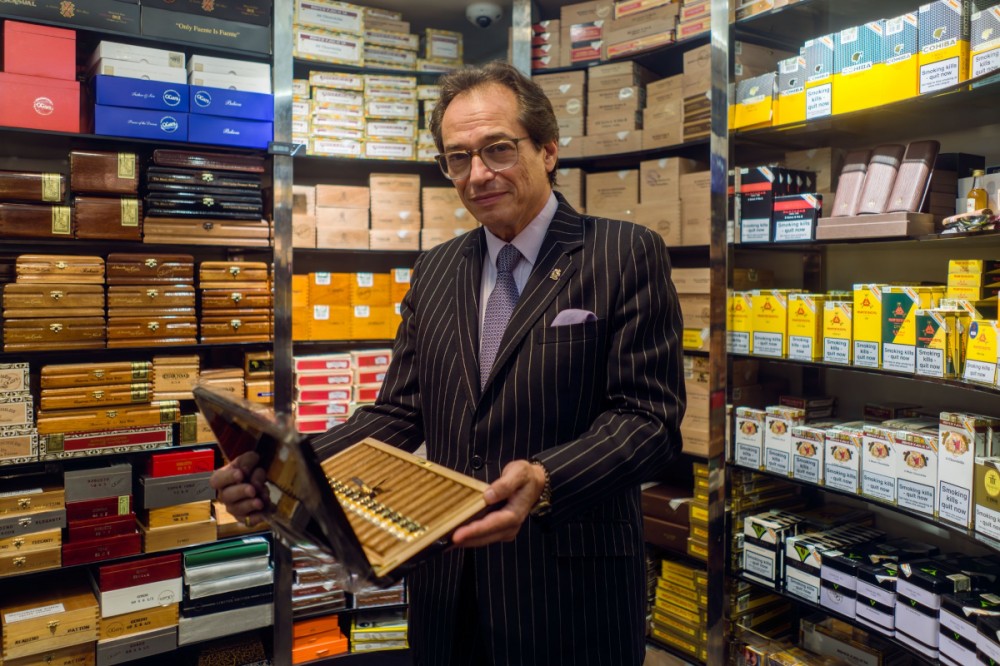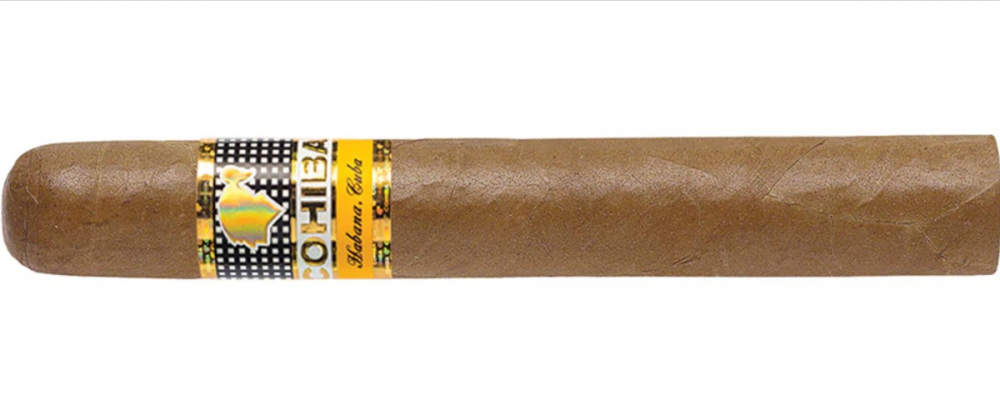Cigars have become one of the best-performing luxury investments, often selling for more than £4,000 apiece. Tom Chamberlin advises on which not to smoke.

During the American tax-dodgers’ war of 1776, George Washington sent a letter to the Continental Congress saying, “If you can’t send money, send tobacco.” Should Sir Keir Starmer be sincere in his hopes to plug the hole in public finances, he would be wise to adopt Washington’s philosophy. Specifically, he should be asking for Cuban cigars.
There was once a time where everything was much simpler; cigars were set on fire, and people had a jolly time appreciating the degustatory pleasure of smoking them. Nick Foulkes, the author of Cigars: A Guide and 2007’s Havana Man of the Year, remembers calling the late, great (cigar-smoking) Mark Birley. “His butler told me that he was sorry, but ‘Mr Birley cannot come to the phone because he is busy relaxing’.” No doubt with one of his Cohiba Siglo I’s, which “he used to keep in a box next to his chair and could be dug into as if it were a bowl of peanuts”.
Nowadays, as I witnessed in June at the Habanos World Days Gala Dinner at the Victoria and Albert Museum, a humidor with 550 vintage Trinidad Fundadores cigars sold at the evening’s auction to a footballer’s agent for €2.5 million — that’s €4,500 per cigar when a 2024 version of it would cost £140 (about €168). The five lots on the night sold for €5.2 million. A simple explanation evades even the deepest of divers into this topic. Jemma Freeman, the chair of Hunters & Frankau, the sole importer of Cuban cigars into the UK, says: “So much of this is impacted by supply.
“In the late 1990s, you had the boom [from the release of Cigar Aficionado magazine], followed by oversupply, followed by chronic shortages. So people just took what they could get their hands on and cigars no one wanted suddenly became saleable.”
Supply comes down to several factors. On the one hand, Cuba is often subjected to hurricanes, so the tobacco fields and curing barns of the Pinar del Rio (the best and most productive region) are at constant risk of being destroyed, devastating tobacco production. Hurricane Irma in 2017 led to a shortage of the Cohiba Behike cigar, which requires a rare fourth leaf, the medio tiempo, when every other cigar has three types of leaf: seco (for aroma), volado (for combustibility) and ligero (for strength). The consequences of Hurricane Ian in 2022 are starting to show, with shortages across the board. Cuba’s stubborn embrace of communism had led to shortages of rudimentary items such as string, and string is crucial to the production of wrapper leaves. No wrappers, no cigars.
Supply matters not without demand, and there’s plenty of that. This makes Cuba’s habit of making bizarre decisions, such as pulling a perfectly popular regular-production cigar from its roster, either genius or cynical, perhaps both. The Trinidad Robusto Extra’s removal in 2012 is one such example. Eddie Sahakian, the proprietor of Davidoff of London, says: “They claimed it was not as popular as I had hoped. But I have no idea what that means, as it was a delicious cigar, always well made. And it always sold well. Depending on their age, they would have been on the shelf for about £35 at release and are now £200.”
Scarcity and limited runs are lucrative. Habanos, the cigar wing of the Cuban government, is savvy, understanding how susceptible collectors are to storytelling and limited editions. Since it launched the first limited-edition cigar in 2000, it has found ways of creating cigars with hype.
The best known of these are the Gran Reserva and Reserva releases, both of which have extra ageing in the tobacco (five and three years respectively), and the regional editions, where cigars are released in one particular market in limited amounts and nowhere else. The chances of these cigars doubling in value within a year of release are extremely high — the Por Larrañaga Sobresalientes UK Regional is now valued five times above its initial release in 2014.
Does age play a part, like wine? It can, but there are no vintage years and the flavour profile of a cigar ebbs and flows depending on the fermentation of the oils within the tobacco, which has a lot to do with how the cigars are kept. Thus, good maintenance has a lot more to do with value than flavour.
As an agricultural product, they are susceptible to diseases. In 1980 blue mould — the bête noir, or bête bleu, of the farmers — wiped out 90 per cent of all tobacco yield and it was only because of Eumelio Espino Marrero, a scientist who managed to breed a resistant tobacco, that the industry was not entirely wiped out.
There is also the issue of cigar weevils, bugs that can hatch and eat their way out of their host cigar. Edward Sahakian, father of the aforementioned Eddie, came up with the idea of cold storage. “I asked for the same air conditioning that butchers use to keep meat in, and it worked, no weevils,” he says. Fortunately for collectors, walk-in fridges are not compulsory, and the recent invention of the Boveda pack — a small brown packet of salt solution that has a two-way humidification control, keeping a humidor or even a zip-lock plastic bag at a certain level of humidity — has made cigar maintenance incredibly simple.

The Cohiba Siglo VI is one of the top five most valuable primary market cigars
Some may correctly point out that cigars are expensive in the UK because of tax. Yes, duty on tobacco is high (£417.33 per kilo of cigars). But the budget every November raises duty annually by about 3-5 per cent, making the cigars already owned by consumers more valuable overnight.
It is in the selling that there is a real upside. Alison Pearson, a partner for private clients at Mercer & Hole, says: “Anything with a predictable life of less than 50 years is what is referred to as a wasting asset, and if this is the case then it is exempt from capital gains tax.” This is not the case for wine or whisky, which although they are exempt from certain taxes as consumables, do not meet the wasting asset criterion. As Freeman adds, “I don’t know anyone who buys pre-embargo cigars with the hope of smoking them.”
Branding plays a part too. Recently there was a decision by Habanos to make various brands more overtly premium, and top of the totem pole is Cohiba. The brand is the most expensive regular production cigar to buy now, and the limited editions give astonishing returns. The 2014 limited edition, the Cohiba Robustos Supremos, was happily sitting on shelves at initial sale for £35 a stick. If you can find one in the shops today, you’ll be fortunate to find it for less than £750 a stick, or a 2,000 per cent return for those who bulk-bought when they came out.
Fear of counterfeits, of which there are many, has meant that, just as with classic cars or watches, paperwork is everything. This has benefited the UK since the introduction 25 years ago of English Market Selection (EMS): marked by a sticker that denotes it has been authenticated by Hunters & Frankau. Cigar sommeliers at private members’ clubs such as 5 Hertford Street, which has the best collection of cigars of the London clubs and hotels, say that Chinese clients will come to them to see the EMS sticker on the box.
China is a protagonist in this story, since a conglomerate bought a 50 per cent stake in Habanos for $1.44 billion. The more creative approach to cigar releases such as spit-polishing brands like Cohiba and Trinidad has their fingerprints all over it. Freeman says: “The narrative arc is that cigars are now in a whole different asset class to what they ever were before, and the new shareholders have really tapped into the super-luxe end of collecting.”
This impact is not only in the primary market of cigars being expensive once they leave Havana Port, but very much in the secondary market, including auctions. The auction market was at one point a trader’s gig, where merchants would buy cigars and mark up for point of sale. Today there is a lot of competition. At the Habanos Festival this year a Cohiba humidor containing 500 cigars sold for €4.9 million. Altogether €17.8 million between eight lots (containing 3,005 cigars) was raised. This is made even more impressive by the fact that up until 2020, no lot had raised more than £1 million.
The most sought-after are the brands that no longer exist in Cuba, notably Dunhill and Davidoff, which made cigars in Cuba until the early Nineties. Mitchell Orchant, the auction supremo who runs C.Gars Ltd auctions, says: “The Asian market continues to be very strong and, as ever, Davidoff and Dunhill cigars command the highest prices and interest. Supply of these scarce cigars has slowed down, though we are still receiving good quality boxes and small collections.”
All the usual health warnings apply when it comes to cigar smoking. But this is arguably an essay for anti-smoking advocates. The way things are going, the best thing you can do with your investments, if they happen to be rolled sticks of Castro’s finest, is leave them be.
Top five most valuable secondary market cigars (price per cigar)
• Cohiba Behike 2006 £10,000
• Cohiba Siglo VI Gran Reserva £3,000
• Davidoff Dom Perignon £2,500
• Dunhill Double Corona £2,000
• Cohiba Ideales £1,000
Top five most valuable primary market cigars (price per cigar)
• Cohiba Behike 56 £600
• Cohiba Siglo VI £150
• Trinidad Fundadores £140
• Montecristo A £130
• Cohiba Esplendidos £100
Article reproduced courtesy of The Times Newspaper - https://www.thetimes.com/life-style/luxury/article/premium-cigars-investment-times-luxury-lpsmv3vms
Wednesday 12th February 2025